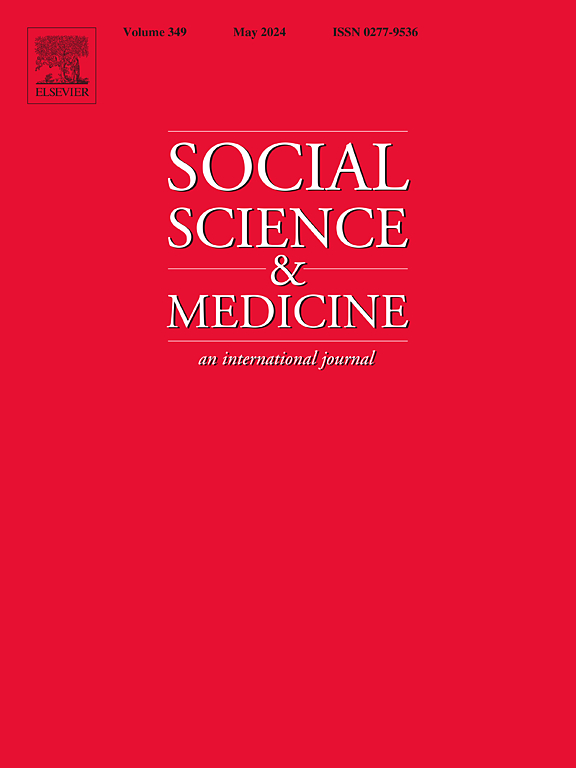Effects of executive function on age-related emotion recognition decline varied by sex
IF 5
2区 医学
Q1 PUBLIC, ENVIRONMENTAL & OCCUPATIONAL HEALTH
引用次数: 0
Abstract
This study delves into the criticality of Emotion recognition (ER) as a pivotal component of social functionality and psychological well-being, focusing on its susceptibility to aging and sex-related differences. Underpinned by the 'frontal aging hypothesis,' which posits a particular vulnerability of executive functions to the aging process, this study aims to unravel the intricate dynamics of how aging influences ER in both sexes, emphasizing the mediating role of executive functions. A cohort of 127 healthy adults underwent the Multi-Modality Emotion Recognition Test mobile application to assess facial ER and cross-modal matching abilities. Comprehensive neuropsychological assessments supplemented this to evaluate various facets of executive function. The analysis indicated a pronounced decline in ER performance among older adults, with no significant sex differences across age groups. However, gender-specific patterns emerged in the aging-ER relationship. For males, cognitive flexibility (β = 0.399, p < 0.001) and inhibition (β = 0.329, p = 0.020) were partial mediators. In females, working memory (β = −0.297, p = 0.023) and selective attention (β = 0.290, p = 0.042) moderated the aging-facial ER link, with inhibition (β = 0.284, p = 0.015) also playing a partial mediating role. Additionally, inhibition (β = 0.194, p = 0.043) moderated the relationship between aging and the female's cross-modal matching. The findings highlight a gender-differentiated impact of executive functions on age-related ER decline. This underscores the need for gender-tailored approaches in enhancing ER, particularly in an aging population.
执行功能对与年龄相关的情绪识别能力下降的影响因性别而异
情绪识别(ER)是社会功能和心理健康的关键组成部分,本研究将重点放在情绪识别对衰老的易感性和性别差异上,深入探讨情绪识别的关键性。额叶衰老假说 "认为执行功能特别容易受到衰老过程的影响,在此假说的支持下,本研究旨在揭示衰老如何影响两性情绪识别的复杂动态,并强调执行功能的中介作用。127名健康成年人接受了多模态情绪识别测试移动应用程序,以评估面部ER和跨模态匹配能力。此外,还进行了全面的神经心理学评估,以评估执行功能的各个方面。分析结果表明,老年人的面部表情识别能力明显下降,各年龄组之间没有明显的性别差异。不过,在老龄化与 ER 的关系中出现了性别特异性模式。对于男性来说,认知灵活性(β = 0.399,p < 0.001)和抑制性(β = 0.329,p = 0.020)是部分中介因素。在女性中,工作记忆(β = -0.297,p = 0.023)和选择性注意(β = 0.290,p = 0.042)调节了衰老与面部 ER 的联系,抑制(β = 0.284,p = 0.015)也发挥了部分调节作用。此外,抑制(β = 0.194,p = 0.043)调节了衰老与女性跨模态匹配之间的关系。研究结果表明,执行功能对与年龄相关的ER衰退的影响存在性别差异。这突出表明,在提高应急反应能力方面,尤其是在老龄人口中,需要采取适合不同性别的方法。
本文章由计算机程序翻译,如有差异,请以英文原文为准。
求助全文
约1分钟内获得全文
求助全文
来源期刊

Social Science & Medicine
PUBLIC, ENVIRONMENTAL & OCCUPATIONAL HEALTH-
CiteScore
9.10
自引率
5.60%
发文量
762
审稿时长
38 days
期刊介绍:
Social Science & Medicine provides an international and interdisciplinary forum for the dissemination of social science research on health. We publish original research articles (both empirical and theoretical), reviews, position papers and commentaries on health issues, to inform current research, policy and practice in all areas of common interest to social scientists, health practitioners, and policy makers. The journal publishes material relevant to any aspect of health from a wide range of social science disciplines (anthropology, economics, epidemiology, geography, policy, psychology, and sociology), and material relevant to the social sciences from any of the professions concerned with physical and mental health, health care, clinical practice, and health policy and organization. We encourage material which is of general interest to an international readership.
 求助内容:
求助内容: 应助结果提醒方式:
应助结果提醒方式:


